Epasa increases the operational efficiency of its plants in 25% with Elipse’s platforms
Combined, Termoparaíba and Termonordeste constitute the second largest oil-fueled thermal power plant in Brazil and the fifth largest worldwide
Published on 23/01/2023

Needs
Industry 4.0 is the culmination of years of research and significant investments made by companies looking to increase their productivity and effectiveness. Its concepts, dating back to 2012, have motivated Epasa (Centrais Elétricas da Paraíba) to modernize the company’s industrial automation infrastructure in order to increase the operational efficiency of its two thermal power plants: Termoparaíba and Termonordeste.
Located in João Pessoa, capital city of Paraíba state, in the Brazilian northeast, the plants have 20 motor-generated units altogether with total installed engine power of 171 MW each. Combined, both plants constitute the second largest oil-fueled thermal power plant in Brazil and the fifth largest in the world, with the ability to generate energy to about one million people.
Before modernization, Epasa conducted several studies in order to identify the main point that needed improvements, so that they could seize the pre-existing infrastructure as much as possible. The findings of these studies indicated that by updating SCADA, they would be able to use several technologies from Industry 4.0 with little alterations to its physical infrastructure.
The SCADA system in effect by the time of the studies not only couldn’t be integrated to other external systems, but it also had other negative points, such as limitations to the amount of history data in the database, tardiness to send commands to assets in the field, and complex screens. In addition, the plants had not one, but two SCADA systems running in them: one for controlling generating units and industrial assets, and another one for operating and supervising assets in substations. This has made alarms management more difficult for operators.
From the result of the studies, the engineering team then established the main goals to be achieved with SCADA’s update:
- Improving browsing and simplifying screens based on High Performance IHMs development.
- Providing scalability and integration with external systems/databases.
- Ensuring remote access.
- Implementing an optimized graphic tool for both history and real-time data in order to improve browsing and more dynamic operations, allowing for the visualization of several variables at the same time.
- Sending faster commands to assets in the field.
- Improving the ability to identify alarms/failures in the plant floor and substations via a single system.
- Promoting the implementation of new measures pertaining Industry 4.0.
Once these goals had been established, the next step for Epasa was to search for the main SCADA system vendors and the solution providers connected to them. By the end of the selection process, the company opted for the solutions developed by Elipse Software. The choice met two criteria: the great technical and financial cost/benefit offered by Elipse, and the presence of several solution providers specialized in these projects in Epasa’s area.
Solution
The automation upgrade solution chosen by Epasa to control its thermal power plants comprises a project integrating four Elipse products: Elipse Plant Manager, Elipse E3, Elipse Power, and Elipse Mobile. In order to implement these solutions, Epasa has both signed partnerships with a few Brazilian solution providers and qualified its engineering technical staff so that they could be able to migrate the old SCADA system into a new one. The new system application, composed of Elipse E3 and Elipse Power, was executed in partnership with Enerwatt Engenharia.
Epasa’s engineering technical staff was responsible for implementing Elipse Plant Manager (EPM) alongside Radix Engenharia e Software, which developed the AI-fueled Digital Twin system inside EPM Processor. Finally, the Elipse Mobile screens were developed by the technical staff at Epasa; this team is now responsible for maintaining all existing features and creating new ones for these applications. Check out below how each platform by Elipse Software contributed to the automation upgrade at Epasa.
Elipse Plant Manager
Elipse Plant Manager (EPM) is the Elipse platform used for collecting and integrating all Epasa’s sensors and meters into a temporal database large enough to store a great amount of data. In addition, it provides a flexible, simple, interactive graphic analysis tool via EPM Studio, which is employed by electromechanics and engineering maintenance teams to help them identify failures and correlations existing between process variables.
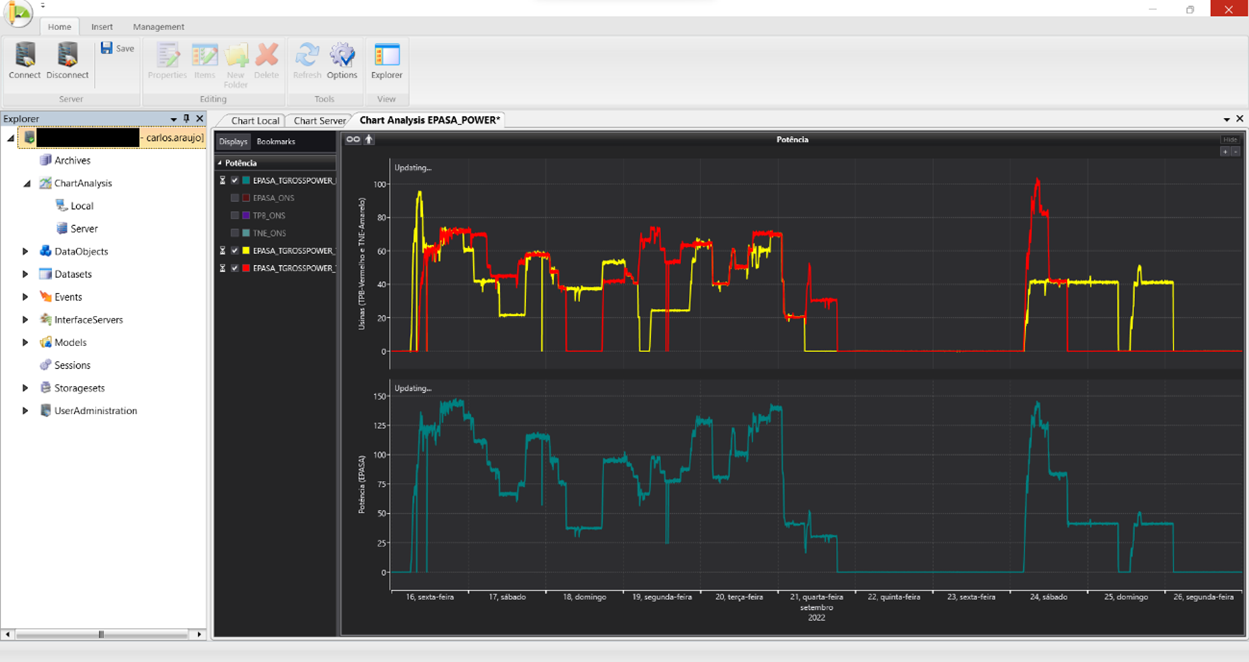
EPM Studio’s graphic analysis tool
To increase the process’s intelligence, the developers used the module EPM Processor. This module represents a great technological advance at Epasa, because it enables visualizing, in an Elipse E3 environment, the calculations made via Python frameworks. Two new Aneel P&D projects were also designed for developing systems that employ the Digital Twin approach. With Digital Twin, it’s possible to use artificial intelligence to predict failures, optimize dispatch, and create virtual models of sensors that measure fuel in generating units which can’t access these measurements.
The Aneel P&D projects were developed with Python inside EPM Processor, where it was possible to execute part of the models in nearly real time, and the other part with pre-scheduled simulations. All the project’s results were shared with Elipse E3, which allows operators to visualize models and alarms directly at the SCADA software.
The project Optimizing the Energy Performance at the Plants (PD-07236-0011-2020) aims at potentializing the energy produced for a given fuel consumption. This happens by increasing efficiency via allocating the better generating units through optimization algorithms, using Digital Twin approach.
There are two ways to execute the optimization algorithm. It can be executed every day, automatically, from the Simulations configured at EPM Processor, whenever the Daily Production Scheduling sent by the ONS is available. Alternatively, it can also be executed from the interface created at Elipse E3, where operators can perform any type of simulation they see fit.
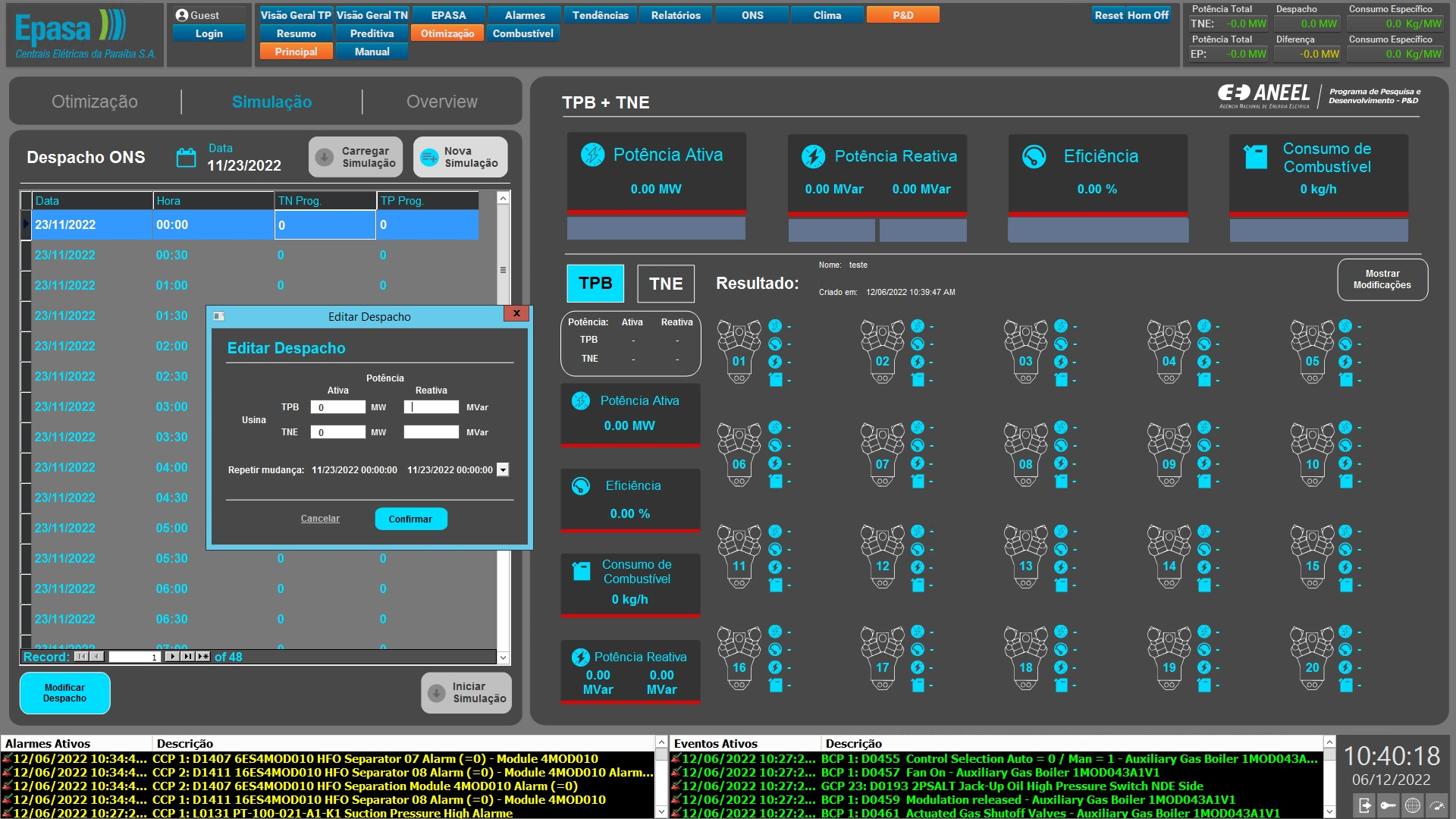
Dispatch simulator screen in manual mode
In order to increase the thermal plants’ power performance, a virtual sensor of fuel consumption was developed exclusively for the generating units, because many of them didn’t previously have this type of measuring at their disposal. To create the virtual sensors, the development team used real data, captured from real sensors, regarding variables that present strong correlation with the fuel flow variable, such as combustion air pressure and power.
Via regression algorithms, it was possible to train a model using historic data from generating units that display fuel flow physical sensors. Thus, Epasa is able to use the model trained inside EPM Processor, which is then executed from Productions in nearly real time.
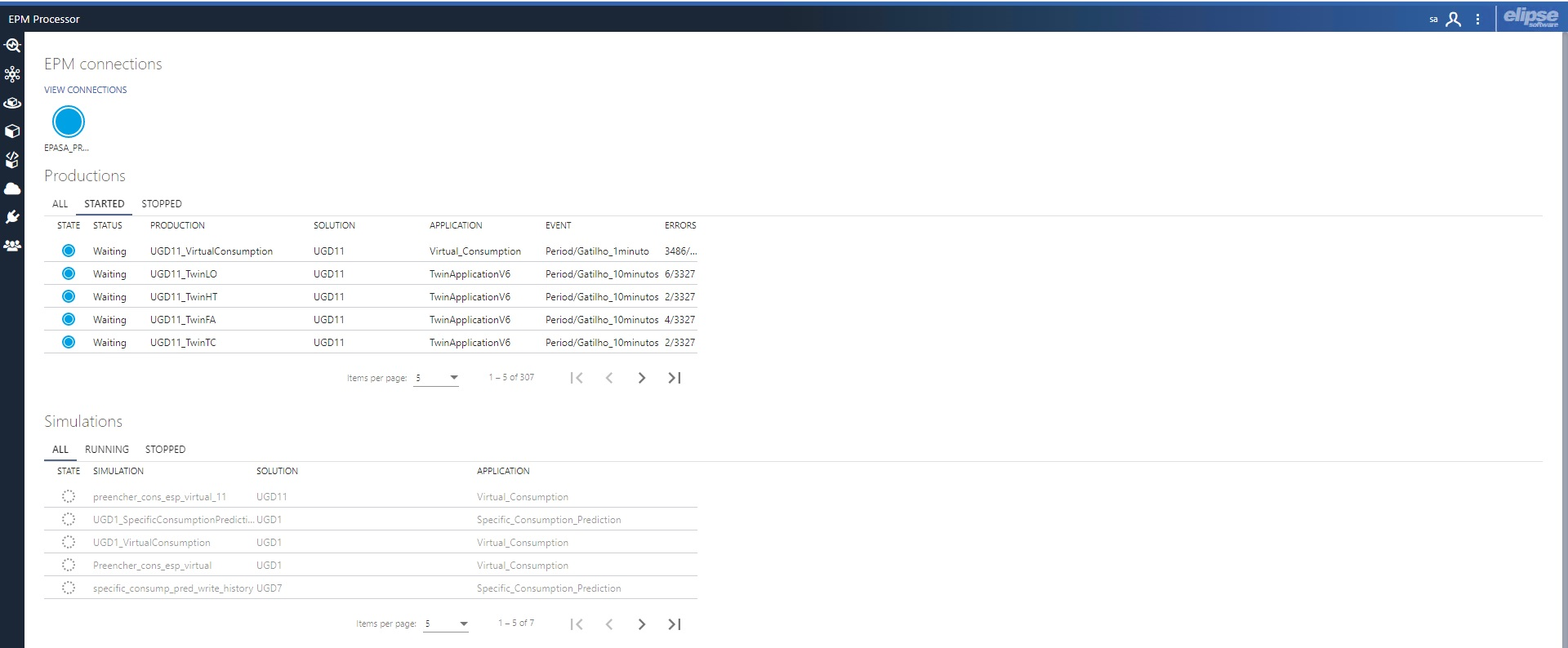
EPM Processor overview displaying 307 Productions in operation and available Simulations
Also available via EPM, the Digital Twin Project for Supporting Operational Decision Making (PD-07236-0010-2020) is a tool built over a set of Artificial Intelligence models. These models both predict and indicate, in real time, trends and operational deviations in the plants’ generating units, in order to generate alarms related to said deviations. The alerts and insights issued by this tool allow operators to perform operational maneuvers in order to avoid an undesired trend and/or generate maintenance actions to protect the equipment/subsystem.
The intelligent system developed in EPM features digital modeling, which uses the Digital Twin approach to verify and follow up the equipment’s operation by comparing the generation data retrieved in real time with the generated model used by its “digital twin”. From this, a health index is calculated to foresee the subsystem’s condition and indicate any deviations in the operation.
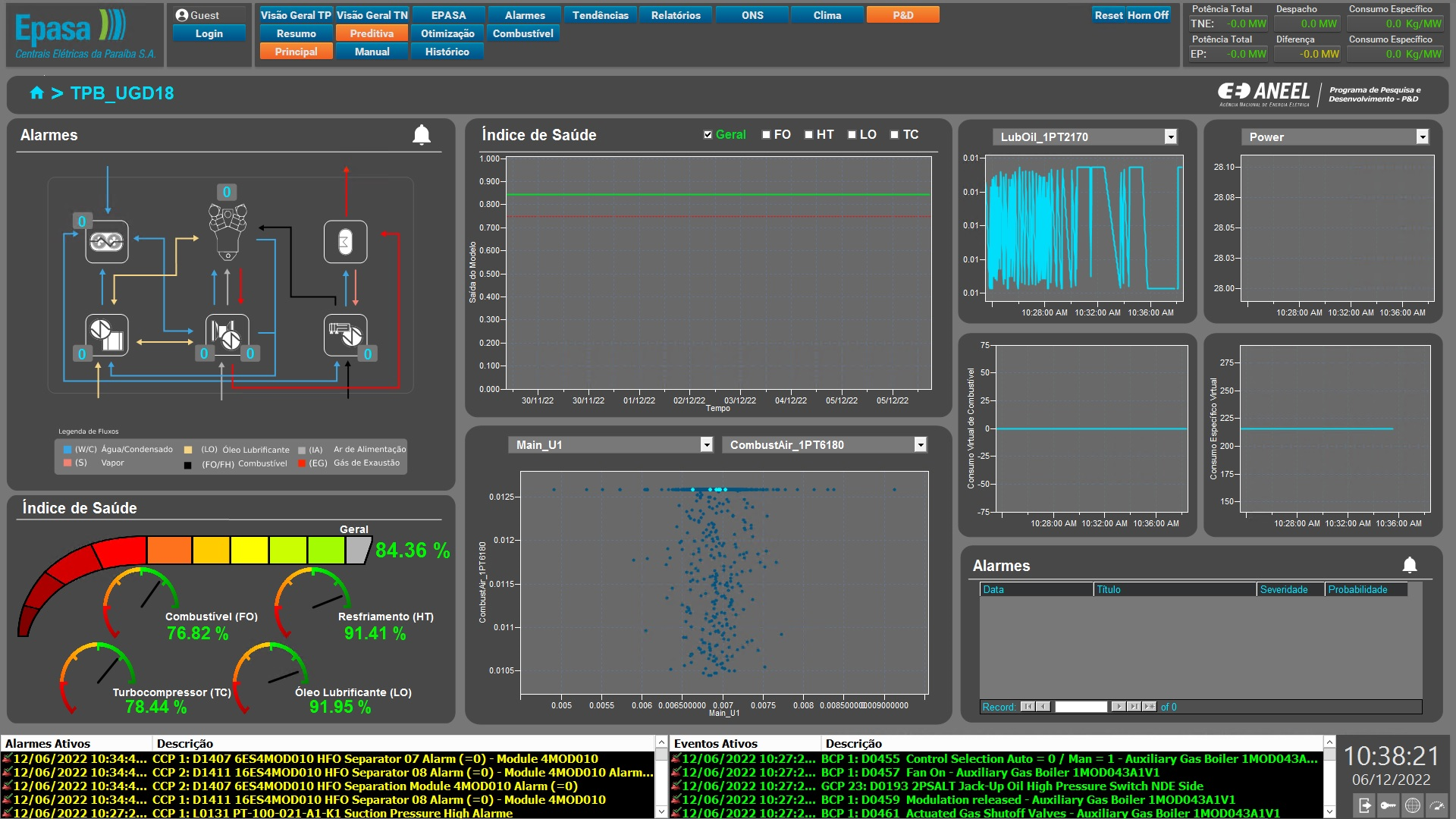
Control screen with the Digital Twin results of a generating unit
Inside the supporting Digital Twin, there is also a module that analyses fuel quality, based on temperature, density, and fluid viscosity variables. From this index, it is possible to estimate the specific consumption for the following days, and then assess the generation performance of the operation based on the fuel’s characteristics.
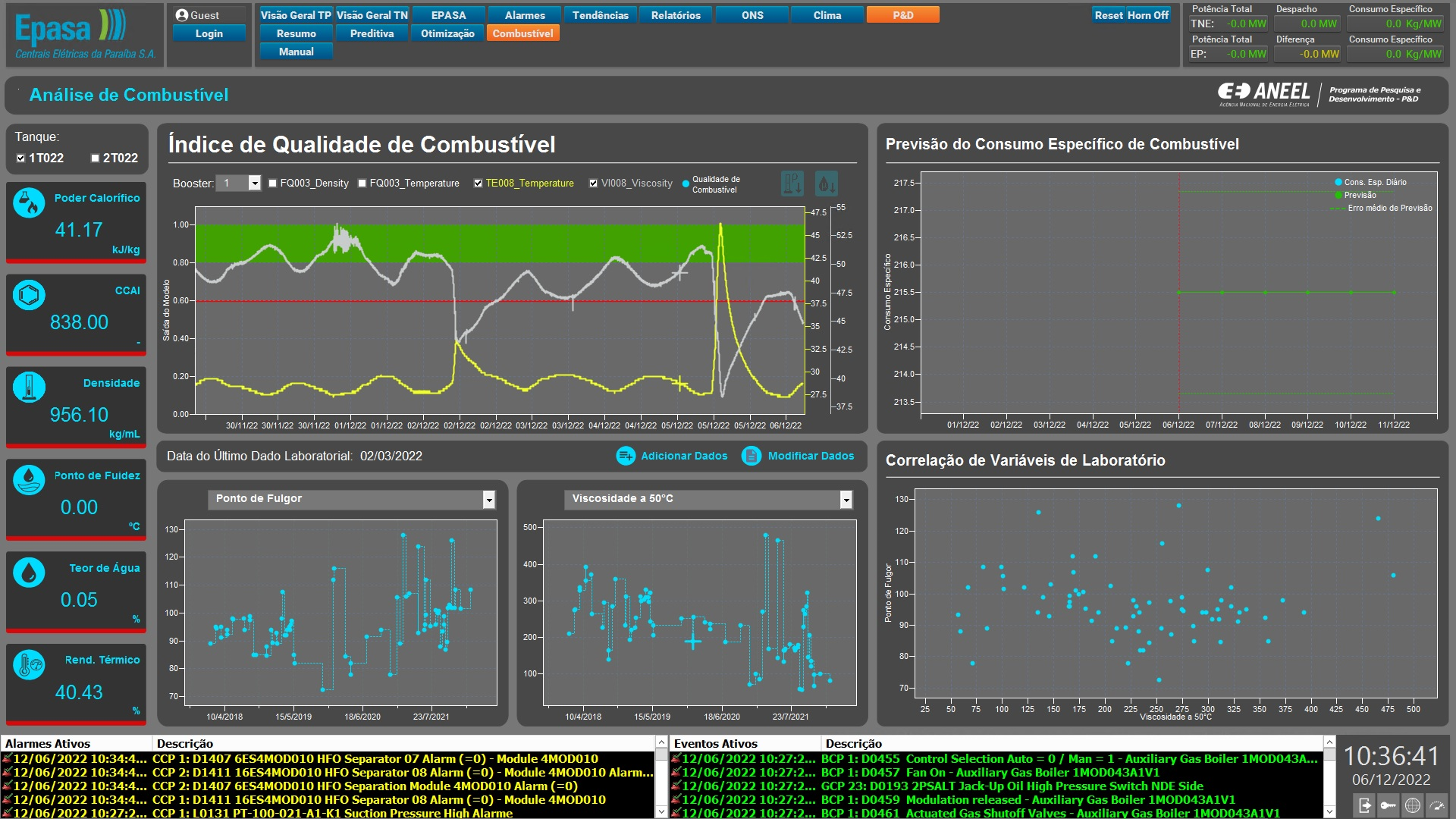
Screen that displays controls with results of fuel estimates models
Elipse E3/Elipse Power
Elipse E3 allows controlling a series of devices and variables related to 40 generating units in the plants, such as diesel engines, outputs, generators, lubricating pumps, temperatures, pressure, voltage, currents, and frequency. It also allows monitoring and commanding compressor units, pumps, electric and pneumatic valves, and inverters, among other industrial assets used for enhancing power generation.
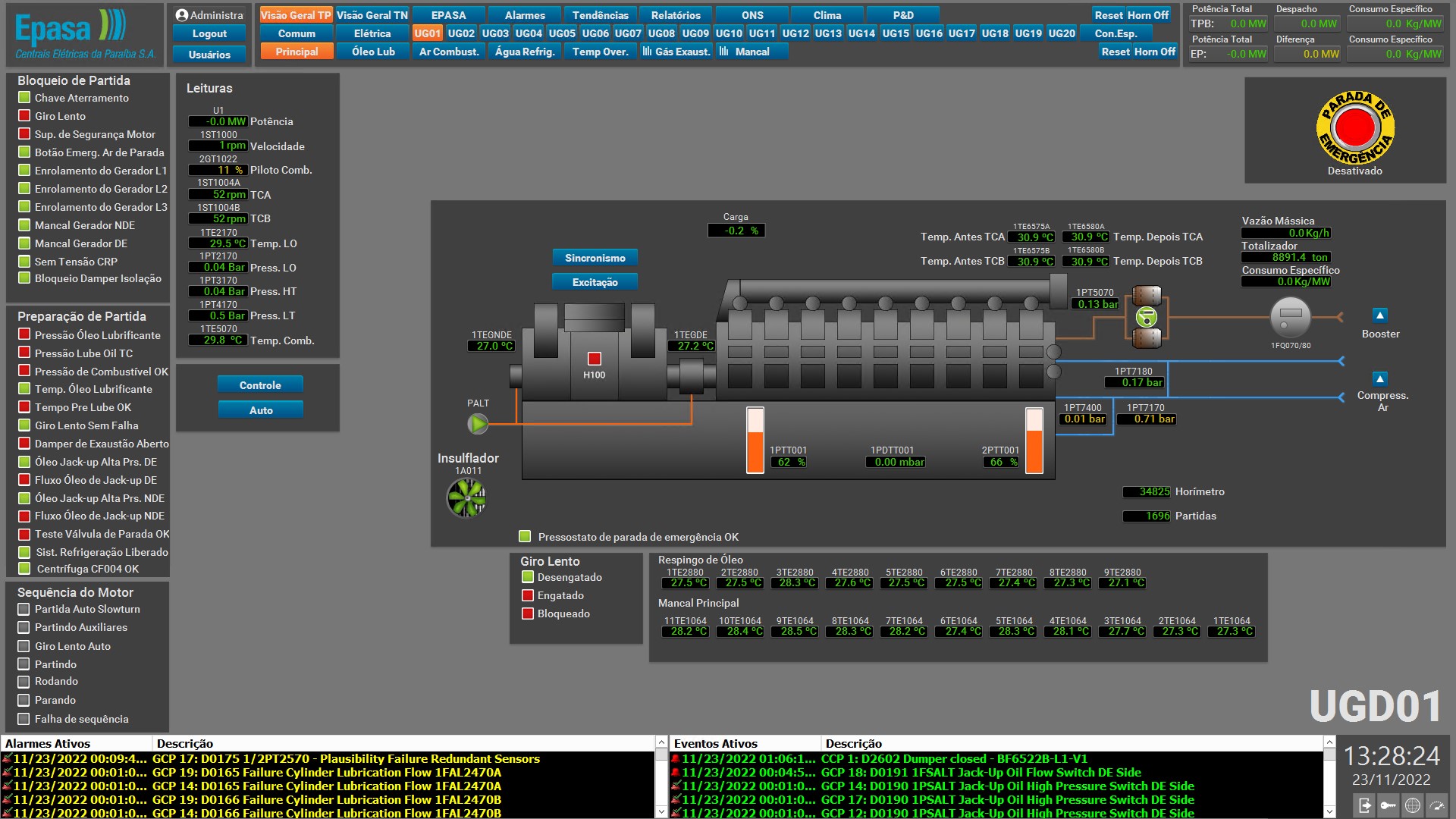
Controlling a generating unit via Elipse E3
On the other hand, Elipse Power controls switches, sectionalizers, breakers and other devices from substations in the plants with high (230k), medium (13k), and low (380V) voltage. Both Elipse platforms also allow centralizing information in the same environment, thus increasing supervisory capacity. Therefore, operators are no longer required to navigate between different systems to gather information regarding different environments in the plants.
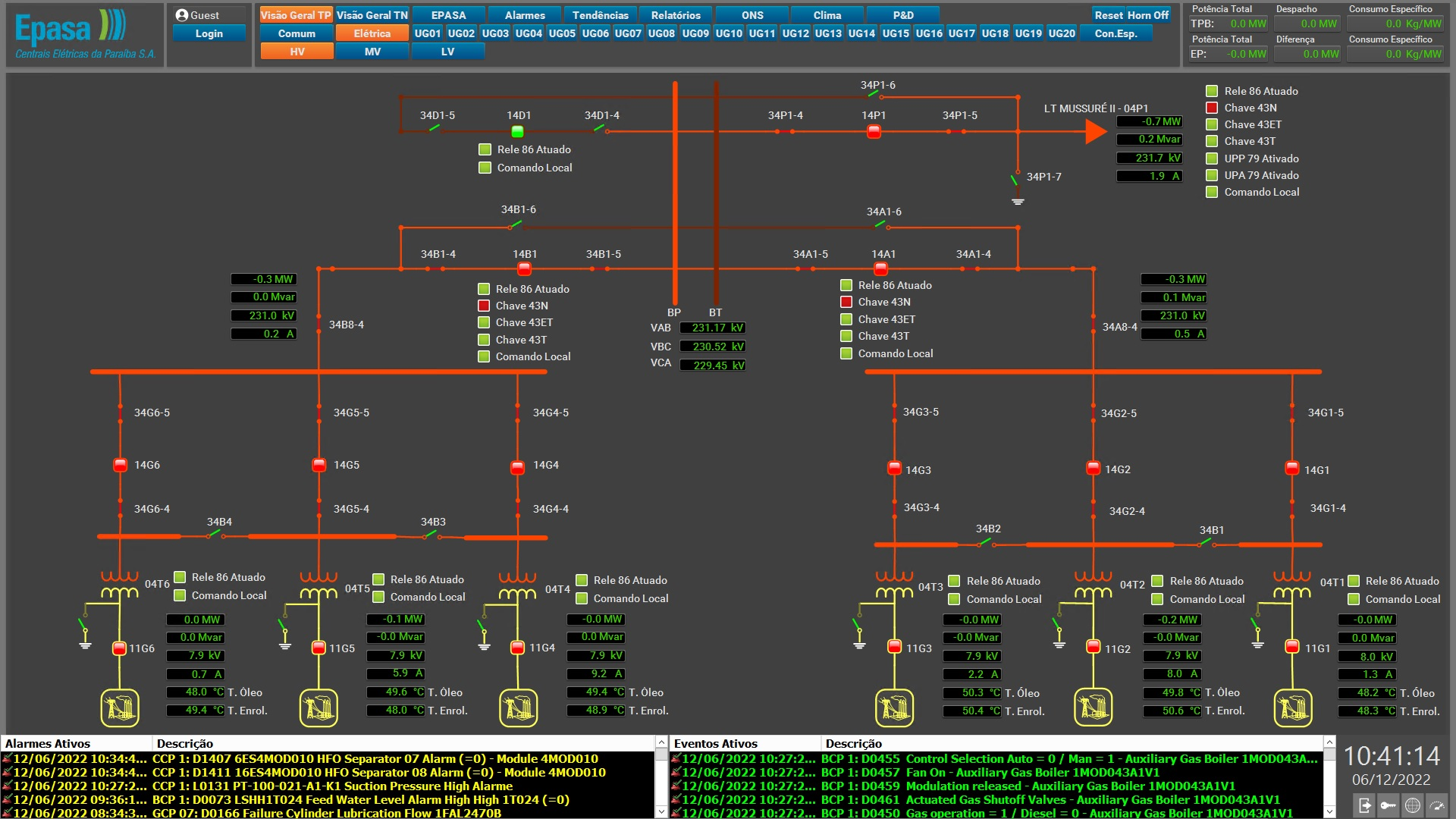
Controlling high voltage substations via Elipse Power
Additionally, the new Elipse E3 and Elipse Power screens were developed under the concepts of high-performance interface, which makes browsing less complex and reduces the number of screens that are required for controlling the plants. This facilitates the adaptation to the new SCADA system and, consequently, generates greater operational efficiency.
Elipse Mobile
Elipse Mobile’s role in this system is to integrate all data from Elipse E3, Elipse Power and Elipse Plant Manager into a single platform (via smartphones or tablets). The software provides a quick, dynamic overview of the whole application, which facilitates the access to reading sensors/meters in real time both to field technicians and to the administrative staff alike. This helps Epasa to make more precise, agile decisions.
With Elipse Mobile, managers can monitor not only generating units but also a significant extension of the plant, anytime, anywhere, from both inside and outside the plant. However, due to the large extent of equipment and the high number of measurements being taken in the thermal plants, not all data can be monitored via mobile. Therefore, only the main measurements were added to the platform.
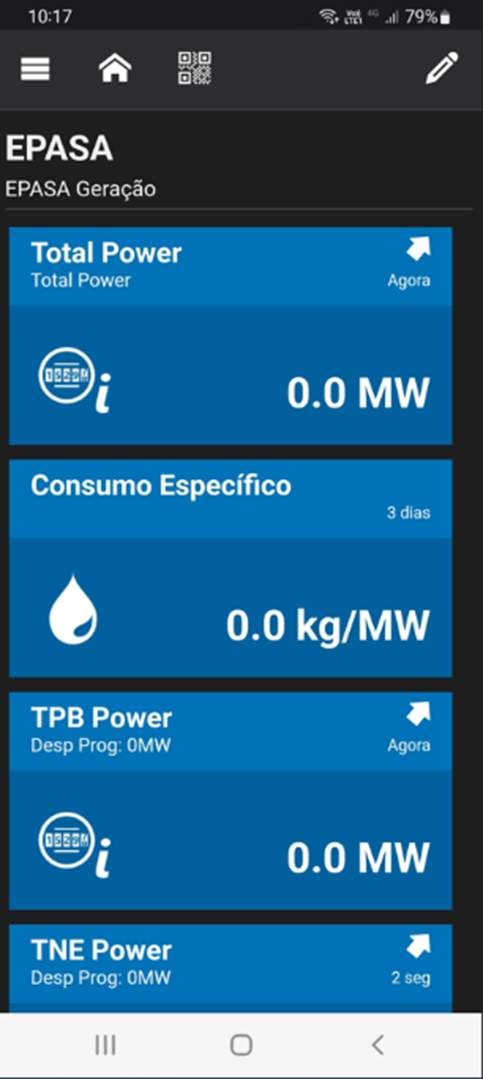
Control via Elipse Mobile in a smartphone
Benefits
- Commanding assets in the field has become faster.
- Centralized control systems now improve how operators can monitor alarms in the control room.
- Operational gains have been attained by using the concept of High Performance.
- Operators’ situational awareness has increased: new SCADA system is easier to navigate.
- Dramatic improvement in the amount of historic data available via EPM.
- Data analysis is better due to EPM Studio.
- Performance gains have been achieved by integrating several different databases via EPM.
- Calculations can be solved by using AI via EPM Processor.
- Data can be accessed with greater flexibility by field operators and managers via Elipse Mobile.
- Development and maintenance of new features in the Elipse solution can be performed internally.
Datasheet
Customer: Centrais Elétricas da Paraíba - Epasa
Solution providers: Enerwatt Engenharia and Radix Engenharia e Software
Elipse products: Elipse E3, Elipse Power, Elipse Plant Manager, and Elipse Mobile
Platform: Windows Server 2012 R2
Number of copies: 4 altogether: 1 Elipse E3, 1 Elipse Power, 1 EPM Server/Processor, and 1 Elipse Mobile
Number of I/O points: 111,000
I/O drivers: DNP3, Modbus, MProt, SNMP, IOKit, and OPC UA
